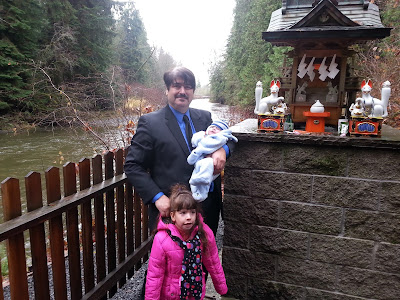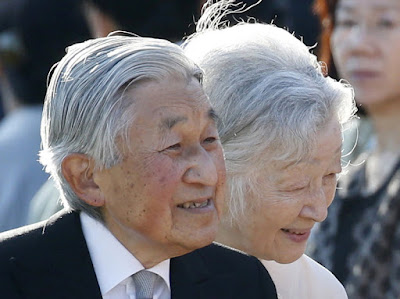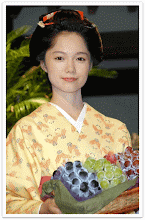It seemed only yesterday that we had boarded the Virgin America plane from LAX with our daughter Mia-Naoko at 32 days of age to fly north to Seattle for her Hatsumiyamairi at the Tsubaki Grand Shrine in Granite Falls Washington. Fast forward six years later, embarked once again on the same identical journey with our newborn son Luis-Makoto for his First Shrine Visit.
According to Shinto Tradition, boys are to arrive at the Shrine 31 days after birth. Had we lived in Japan or in the Seattle area this would be no problem. But being there are no physical Shinto Shrines in the Los Angeles area, our only option was to make the journey to the nation's only Shinto Shrine on the continental United States located near the Canadian border. The logistics of planning the visit complicated by our son's early birth by two weeks placed his 31st day smack in the middle of the Thanksgiving Holiday Air Fare & Hotel booking rush thus we would arrive two weeks later than originally planned. The important part is that we made it.
The last time our daughter Mia was there, she was an infant having her own Hatsumiyamairi so bringing her to where she had been blessed and to where her parents were married made this visit extra special. As in times before, we were happily greeted by the Guji (Head Priest) Rev. Koichi Barrish and Mrs. Barrish upon arrival. It is always a pleasure to see them.
While photos were not taken during the actual ceremony, we can tell you that our son (with his parents and older sister present) was blessed in this important life cycle event to ensure his health and happiness in life as well as to express gratitude to our patron deities for his safe delivery through the recitation of prayer and the waving of the Tamagushi by Barrish Sensei. As with our daughter, our infant son was given his first taste of Sake. We can't say if he liked it or not but his reaction was priceless.
After the ceremony concluded, we took some photos and later toured the Shrine grounds. We have made many good memories over the course of our four visits to the Tsubaki Grand Shrine of North America. In particular, visiting the sacred tree that sits along the Pilchuck River. It is a sight to see!
When you visit the Shrine grounds, one would be remiss to not visit the Inari Fox Shrine located on the edge of the Pilchuck river on the back end of the Shrine Grounds. It is a unique place to make offerings and be one with the Kami.
A view of the Torii Gates leading to the Inari Fox Shrine.
Yours truly with my children.
We hope you enjoyed this blog entry. If you are considering having a Hatsumiyamairi there,
please contact the Shrine through their website at Tsubaki Grand Shrine of America.


































